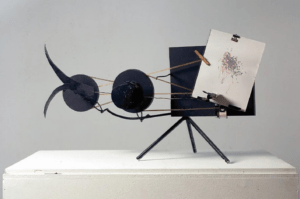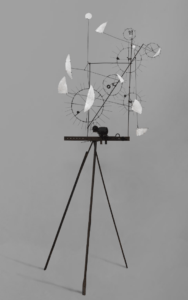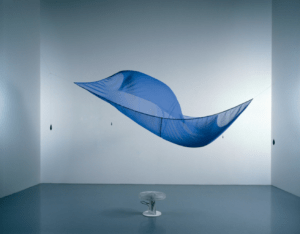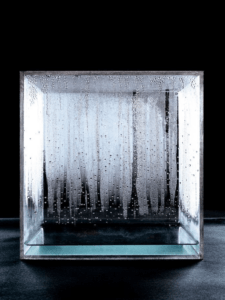The terms “machine art” and “kinetic art” have been historically used to describe artistic practices that incorporate machines and movement as essential elements. Machine art refers to artworks that engage with machines, often exploring their aesthetic qualities and social implications. Kinetic art, on the other hand, specifically focuses on the use of movement as a primary medium of expression.
In the reading”Toward the Art and Aesthetics of the Machine,” Jack Burnham discusses different aspects of machine aesthetics in artworks: Associative Relation, Symbolic Reference, Formalist Emphasis, Kinetic Element, and Automatism. Burnham states that the list does not imply a chronological order or represent distinct genres of machine art. Instead, it provides analytical dimensions to understand how artworks relate to technology and the aesthetic qualities associated with machines. To further explore these concepts, I have selected two artists from the Kineticism movement: Jean Tinguely and Hans Haacke.
Jean Tinguely

- “Méta-Matic No. 9 (1958): perfectly embodies the essence of Jean Tinguely’s approach, as he proclaims the boring and repetitious nature of the machine. As the quote states, ‘Small “surprises” and breakdowns often disrupt the repetition of Tinguely’s devices.’ This resonates with the artwork itself. By removing the artist’s hand from the production of the artwork the art piece allows anyone to engage with the machine and produce abstract drawings automatically, challenging the traditional role of the artist as the sole creator. The machine’s operation is not a flawless, predictable process. It is precisely these small surprises and breakdowns that inject an element of unpredictability and spontaneity into the artistic process. Constructed using found objects and rudimentary parts, the artwork highlights the aesthetic qualities of these technical designs and structures, thus emphasizing the beauty that can be found in the realm of mechanical creations. Once activated, the machine operates independently, producing abstract drawings unpredictably and haphazardly. In this way, Tinguely’s creation embodies the artistic potential and autonomy of the machine, insulating it from the criticisms of frustrated observers.

- T03823 Metamechanical Sculpture with Tripod 1954: the unpredictable and variable movement of the piece, caused by the relatively gimcrack functioning of the cogs and pistons, critiques the idea of precise control and deliberate artistic manipulation. It invites reconsidering the relationship between the artist, the machine, and the resulting artwork. While T03823 may not explicitly employ symbolic iconography, it symbolically represents the mechanisation and automation of artistic creation. The wire and cardboard construction, along with the tripod base and wire wheels, highlight the aesthetic qualities found in the design and arrangement of these mechanical components, while the interaction between the revolving wheels, the projecting wires, and the unpredictable nature of their engagement creates a dynamic visual experience. Lastly, the electric motor provides continuous power to activate the bottom wheel, which sets the entire piece in motion.
Hans Haacke

- Blue Sail: establishes an associative relation between the elements of nature, such as wind and air, and the materialistic object of the blue chiffon cloth. The interaction between the movement of the wind and the suspended chiffon creates a visual dialogue between human beings and the natural world. Moreover, the blue chiffon cloth suspended like a sail symbolically references the concept of navigation, exploration, and journey. Thus, the fan serves as the kinetic element in “Blue Sail” as it provides the airflow to create movement resulting in kinetic motion that adds a dynamic. It also captures the essence of automatism through the interaction between the wind, the chiffon cloth, and the oscillating fan. The movements of the cloth are not controlled by the artist’s direct intervention but rather by the environmental factors and the airflow generated by the fan.

- Condensation Cube: Haacke’s use of the cube as a containment vessel for water creates a closed physical system that mirrors the idea of a living organism interacting with its environment. The random forms taken by the water droplets as they run down the walls of the cube reflect the unpredictable and organic nature of growth and movement. The construction of the cube and the clarity of the material highlight the aesthetic qualities of transparency and simplicity. Although “Condensation Cube” does not possess explicit mechanical motion, it incorporates a subtle kinetic element through the continuous process of water evaporation and condensation. Therefore the piece captures the essence of automatism through the reliance on natural physical processes. Haacke relinquishes direct control over the outcome, allowing the condensation process to unfold freely within the statistical limits.